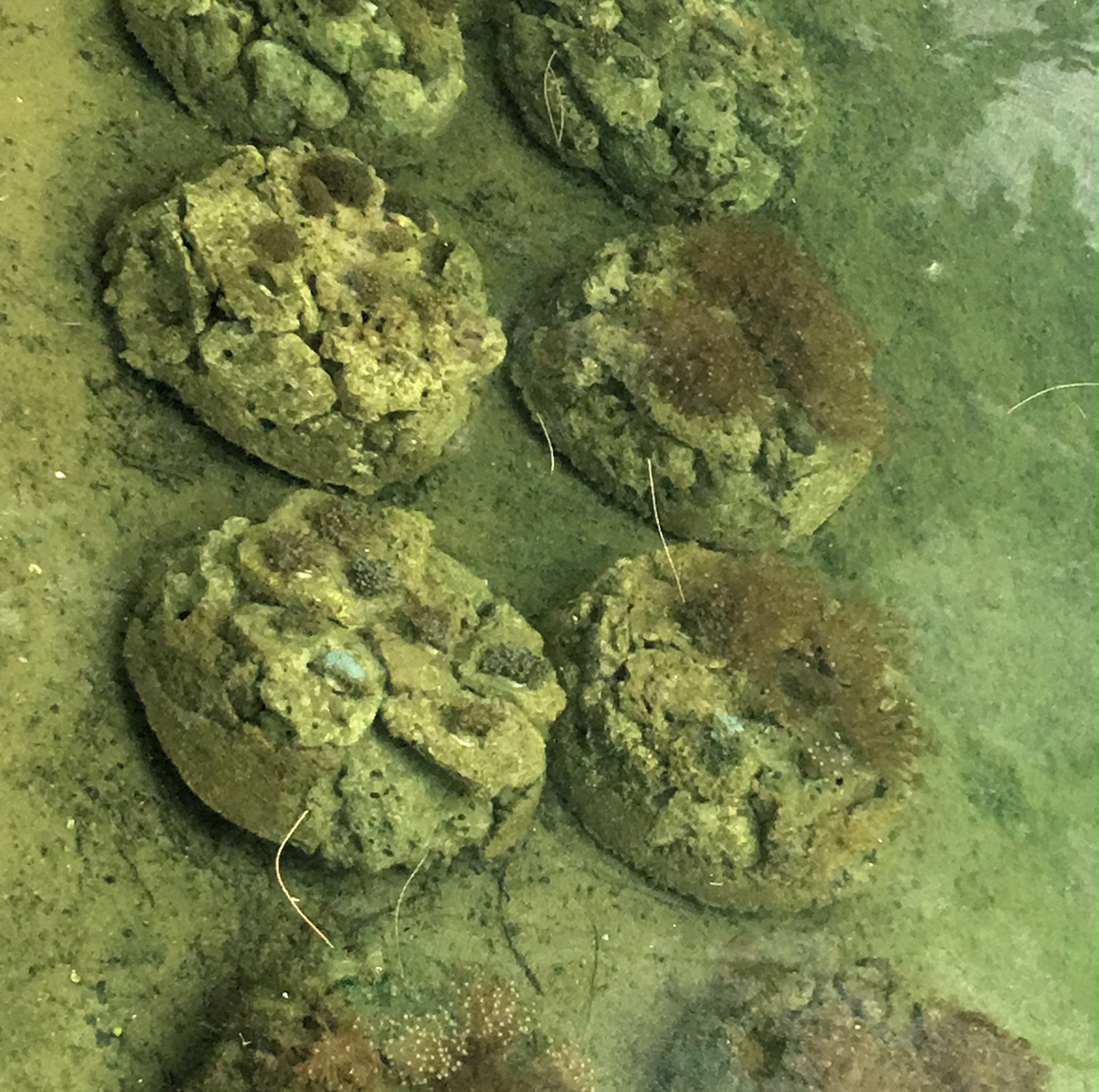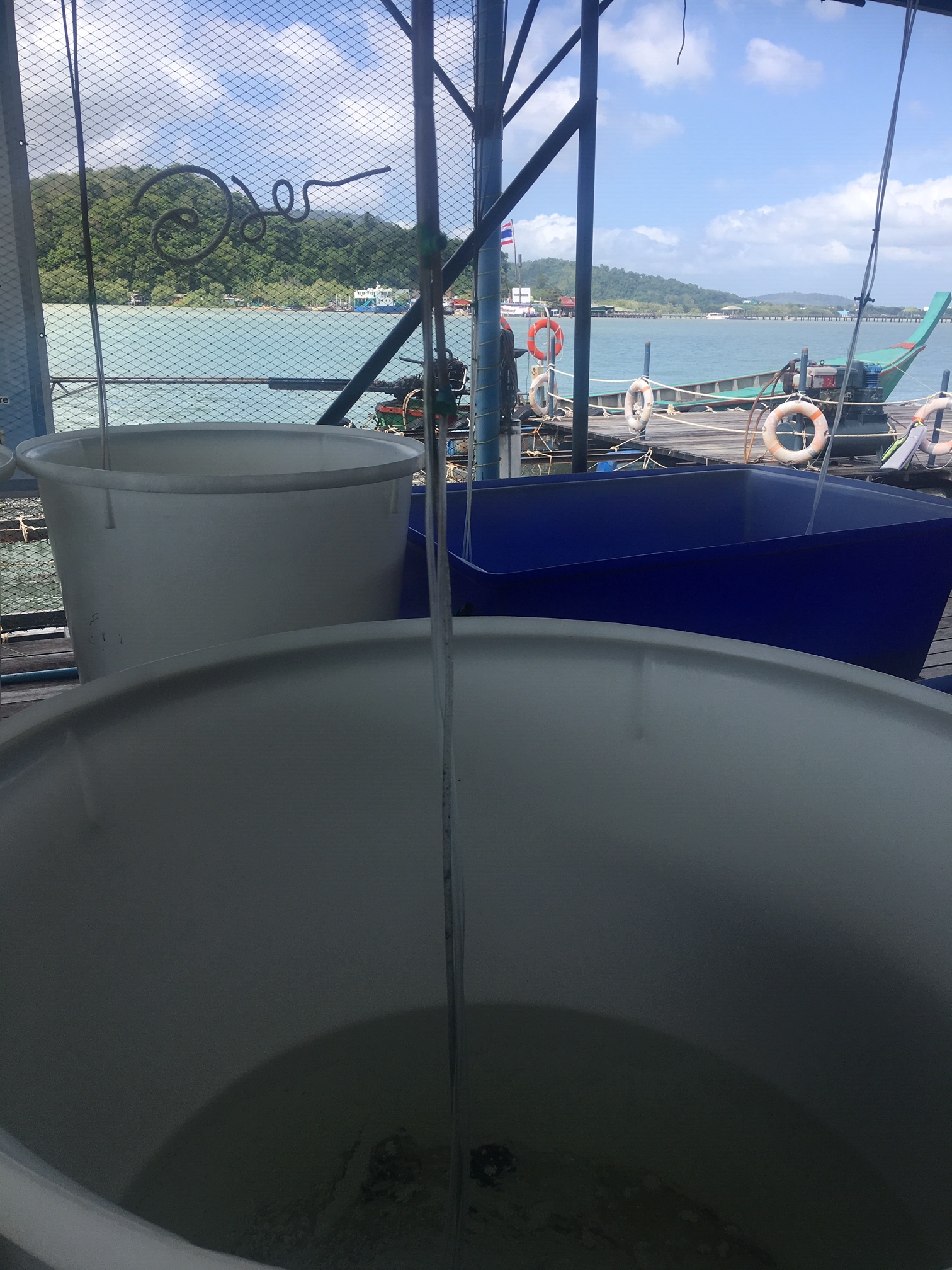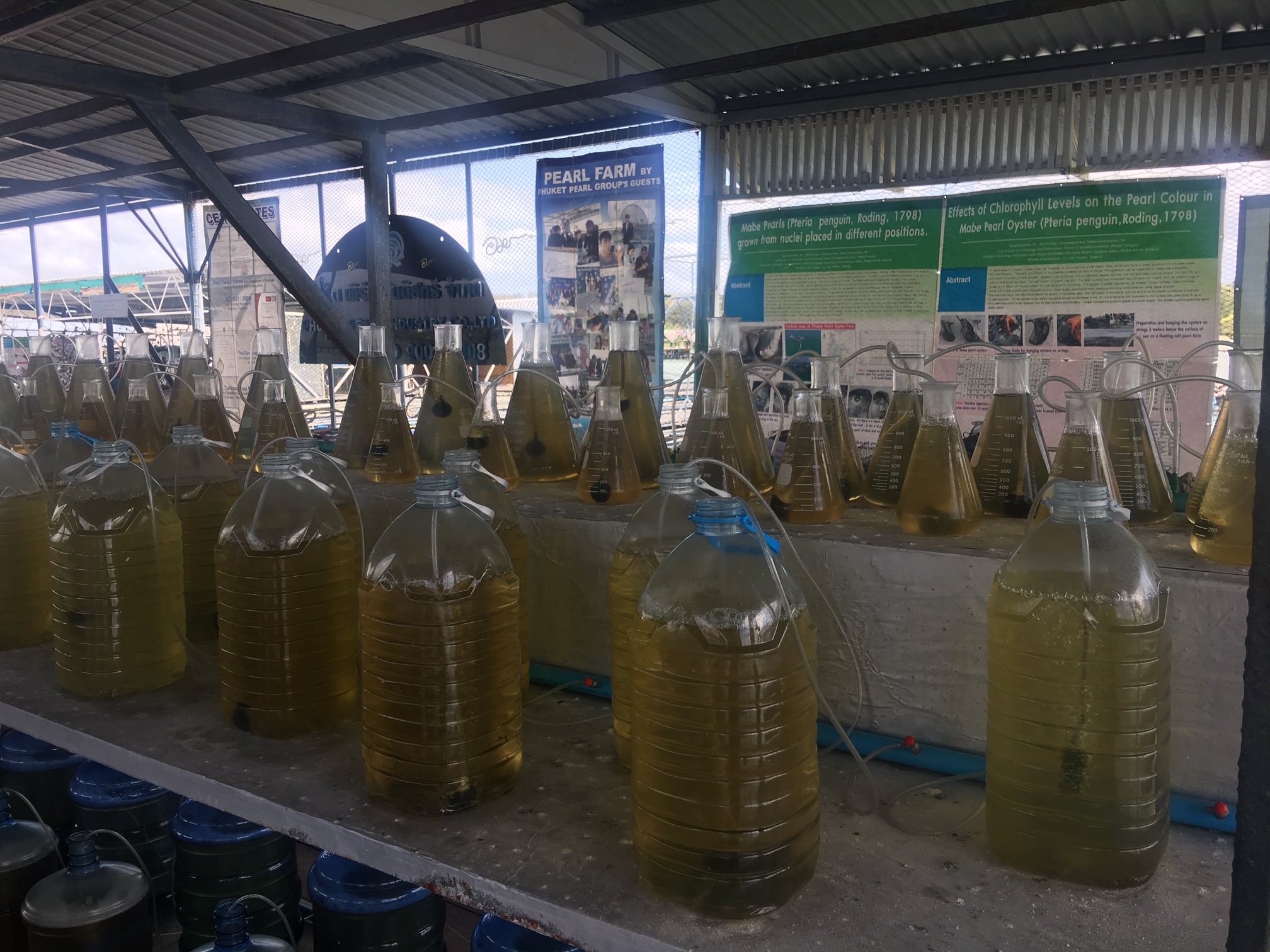When the coral babies are developed enough local volunteers help biologists transplant back on to the living reef. Below are photos of the volunteers and the living reef at low tide. I had to time this exactly to get a decent photo. This is about as exposed as the reef gets. The final two photos represent larger established coral from the reef. These are survivors from the tsuami of 2004.
I found Nemo!
The first photo shows a Clown fish. These little beauties dart in and out of the growing coral babies. The natural pool has abundant species of fish. There is only seasonal contact between the open bay,and the pool so the fish must depend on food sources provided by the baby reef. I tried to capture pictures of various species of coral at several stages of growth. Not bad for an iPhone!
Entering the secluded nursery
The secluded and peaceful nursery is not far from the sea, but one must approach through a path in the jungle. Located in Southeast Asia and operated by a private concern, it’s location can not be divulged. Manned by young marine biologists recently graduated, their enthusiam is contagious. These pictures are taken from the edge of the natural pool. Snorkel equipment was generously provided for an up close view.
Exploring a coral nursery in Southeast Asia
Coral reefs have been in decline for many years for many reasons. Nature’s Artistry uses only corals that have been raised on farms. In January 2019, I was fortunate to visit to visit a private coral nursery. The famous December 26, 2004 tsunami that originated in Sumatra devastated coral reefs throughout Southeast Asia. There was a huge loss of human lives due to this natural event but the loss would have been much greater if the coral reefs protecting the shore had not first absorbed a great deal of the wave energy. This was at a huge cost to the coral and the sea life it supported.
Conservationists are raising baby coral and then transplanting it to the little remaining living reef. Once transplanted, the coral will grow and thrive, hopefully returning the reef to it’s former glory.
Nature creates a pearl, with support from humankind
Eventually, the oysters are ready for harvest. Pictured first, is the oyster opened with the pearl still hidden by the meat. The next photo is of the rare Yellow Lipped South Sea oyster that produces the stunning large yellow pearls starting at 10mm diameter. Pictured next is the extremely rare Ocean Blue Mabe pearl in a heart shape, and it’s round Ocean Blue cousin. I was fortunate to acquire some of these beauties for future pieces in the Nature’s Artistry collection.
Thriving
The maturing oysters continue to grow in their semi-protected environment. Sea born predators and parasites still manage to slip in requiring weekly cleaning of each individual shell.
From the laboratory to the sea
When the baby oysters have grown enough, they are placed between two nets in a safe little pocket. Here they will grow until large enough to be supported on strands of nylon rope and immersed again in the bay. A hole is drilled in the double thickness of the oyster just above the hinge. A metal loop is threaded through the hole and attached to the rope. This is not painful to the oyster, easier than piercing a human’s ear lobe.
More details on from visit to Thailand Pearl farm
Arriving by long-tail boat at this isolated pearl farm in Thailand is an adventure in itself. Be careful not to make any sudden moves, or better yet, don’t move at all or you will end up in the sea. My guide, the captain, and I head out into the azure waters for an island of anchored rafts where the oysters grow. The January sun is blisteringly hot, the sea a tepid 82-84F.
The tour begins with a detailed explanation of the variety of predators and parasites that attack oysters. There are several species of mollusk raised here, along with a few species of farm friendly fish and a hybrid seaweed. I am then introduced to the laboratory where baby oysters are nurtured until they have a chance of survival in the rigors of the bay.

































